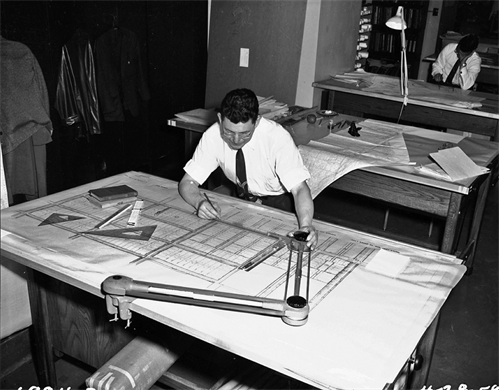When I joined CFMS I knew one thing I was bringing to the team was knowledge of Finite Elements Analysis and structures. It was clear from the start that the purpose wasn’t to create a traditional stress department offering conventional style analysis. The purpose was, in line with CFMS’ philosophy, to move forward, to move past the current methods and ask yourself a simple question: how can we make it better?
To answer a broad, but at the same time challenging question like that, I started from the basics: I had to answer a question with another question! What is the problem we are trying to solve?
The current and most common engineering chain still adopted by many, probably most, companies derive from several decades ago, before the advent of CAD software, FEM and even computers.

Skilled mechanical designers produce 2D paper drawings and pass them to structural engineers who verify the design. If something doesn’t pass the checks the drawings are pushed back to the designers. The loop is repeated until all structural checks are ok. And this is just scratching the surface, certification, procurement, manufacturing…Everything can add an additional level of complexity in the process. In a safety-first industry like aerospace, this can lead to a new aircraft programme being developed by thousands of people and taking almost a decade to complete.
While tools have changed and both the computer revolution and the age of digital engineering have happened, the mentality is still very similar to 100 years ago. These series of loops, with siloed engineering disciplines, have worked well for decades. However, maintaining the status quo costs a lot of money. When heading towards an automated world with digital engineering and the advent of AI, there is no reason for old processes not to be automated and changed.
Certain levels of craftsmanship, the skills of a good mechanical designer or a stress engineer will still be very useful. The aim of the future is for full automation, at least for the initial design of any product. Instead of going through multiple design loops to capture an OK initial design, the future is pushing us towards the creation of a fully automated Design of Experiment, where variations of an initial FEM or CFD model (or any other discipline involving digital data) will allow us to explore the design space in ways we couldn’t possibly do with paper. Imagine having a large component, a wing, with thousands of parts. Imagine changing the material of each individual component, to change thicknesses, tolerances, locations.. it would take thousands of engineers a long time.
Using the capabilities at CFMS we can generate thousands of these models and thousands of different solutions with the click of a button. The input and output of these simulations can be used to successfully train an AI surrogate model with machine learning algorithms or evaluate the performance of the analysis using numerical optimisation.
The room you see in the picture has long since been replaced by computer terminals rather than drawing boards but the principles are the same. Using the techniques developed by CFMS a small team of engineers and data scientists could potentially make the process more efficient, allowing the wider resource pool to focus on added value activities rather than simply making iterations of one design. This will not only save money by reducing the time needed but also because, by reducing uncertainties or capturing potential flaws through extensive simulations early on in a programme, the cost to rectify them is minimised.
Now, at the beginning of this article, I mentioned how I started at CFMS. The reason I found my position in the Advanced Simulation team exciting was that I could freely experiment with all the various disciplines in the Company. Combining them is not just a luxury, it is a mission.
Which brings me to a consideration on disciplines which are often ignored by people working in design. Aspects of economy, procurement, manufacturability, are unknown to most technical people working on the product design. Whether a large OEM with strict rules on suppliers and materials, but a more stable operative environment, or a small company with more flexibility but subject to constant operational and procurement changes, being able to embed different parameters in the analysis from the start can save a lot of time and a lot of money.
A practical example is bolts. On complex aircraft projects, bolts can cost anywhere from pennies to several Dollars. It happens all the times that a stressman would pick an Inconel bolt to make their life easier, they are really strong, so why not? Well, a couple of weeks later somebody will pay a visit to their desk to ask if it’s really necessary to choose the most expensive bolt-on the list. For, if you multiply the cost by the several thousand you need for the full programme, the budget will spiral out of control. Now, imagine you could include cost control in your analysis. That would guarantee that you can obtain the perfect design, not only from a structural and safety perspective but also from a programme and cost point of view.
This multi-sector analysis is already a reality at CFMS. In a single project we can optimise the aerodynamics of a shape using CFD and AI, then take the output to generate several thousand variants of an FE Model which we solve using our high performance computer. We include considerations of procurement and costs and in the end, with a few engineers, we obtain not only an excellent design from a technical and safety standpoint but also one that is cost-effective with minimal lead time.
This pushes traditional methods towards a new era where digital technologies are integrated into full product development. As cliché as it may sound, the future is already happening at CFMS.